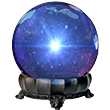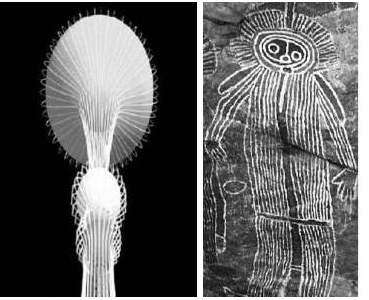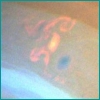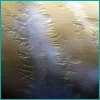


The Restoration of the meaning of ancient symbolism
| Ancient Testimony | |||||
| Mythology | |||||
|
Modern scholars generally define myth as a form of sacred history which attempts to describe the origin of the world and various cultural institutions. If, as seems to be the case, myth also preserves clues for reconstructing the recent history of our solar system, its study becomes all the more important. Comparative mythology highlights striking cross-cultural similarities which strongly suggest that the core of most if not all ancient mythology has planetary origins. This begs the question: How is it that planets which appear as mere tiny specks in the night sky could have held such a profound fascination for our ancestors? According to the prevailing dogma, the Nebular Hypothesis, planets and stars accreted from the dust cloud after the Big Bang billions of years ago. In this dubious model it is assumed that these bodies have occupied more-or-less steady and unchanging orbits ever since. Anyone who challenges this ideological assumption is quickly reminded of the 'fact' that the only forces at work are gravity and inertia. Any contrary viewpoint thus requires 'mysterious' forces. But these mysterious forces, as it turns out, are not so mysterious after all. When the role of plasma and electromagnetism is acknowledged whole new vistas open-up, and this broader perspective allows us to view ancient mythology with more respect and less contempt. Is so much ancient myth merely the work of ignorant, superstitious savages, or do our ancestors have something far more profound to tell us? Could it be that our ancestors viewed skies very different from what we see today, and that they witnessed spectacular discharge and catastrophic events in recent millennia! Phenomena that make today's auroras and natural disasters look trivial by comparison? So many bizarre mythological details don't make any sense in the real world, such as flying and fire-breathing dragons, and countless others. It is easy to dismiss them as the product of creative imagination, but this attitude runs up against an insuperable difficulty - these seemingly impossible motifs can be found around the globe. It is very difficult to understand how creative imagination could explain such consistent and recurring motifs, as a number of leading anthropologists and mythologists have acknowledged. A beautiful and fascinating video from David Talbott and the Thunderbolts Project - Symbols of an Alien Sky |
|
||||
| Saturn | |||||
|
Saturn appears to play perhaps the most important role in ancient mythology, that of the central luminary of the sky. This begs the following questions: Why did the early astronomers celebrate the planet Saturn as the first Supreme God? Why did the ancients sacrifice their children to Saturn? Why was the original Sabbath, the most sacred day of the week, named after Saturn? Why did ancient nations invoke Saturn as the primeval Sun? Why did early astronomers declare that Saturn ruled from the celestial pole? Why do so many modern religions carry remnants of Saturn worship? Dwardu Cardona's new book, God Star, is a comprehensive and fascinating look at Saturn mythology. |
 |
||||
| Venus | |||||
| The planet Venus also plays an important role in ancient mythology. Converging ancient images include the Babylonian 'torch' and 'bearded star', the Mexican 'smoking star', the Peruvian 'long-haired' star, the Egyptian Great Star 'scattering its flame in fire', and further widespread imagery from around the globe -- that of Venus as a flaming serpent or dragon in the sky. | |||||
| Mars | |||||
|
The planet Mars, of course, is associated with war, and the month of March is named after it. He was the fearless warrior who wielded thunderbolts, and he is venerated by many differing cultures across the globe, where the themes vary little. Consider the following parallels: 'Scarface' was the name of a legendary Blackfoot Indian warrior, also called 'Star Boy'. The Pawnee warrior, Morning Star, can also be identified as the planet Mars. Greek mythology describes various heroes and rogues being struck down by a thunderbolt. For example, when Ares, the planet Mars, was wounded in battle, he roared with the din of a thousand warriors and rushed to Zeus to show off his scars. Hindu myths also speak of a deep scar on the head of the warrior Indra, their god of the cosmic thunderbolt. Pictured right is the Aztec god Xipe, sporting a scarred face. Video link: Symbols of an Alien Sky Episode 2 - The Lightning-Scarred Planet Mars |
|
||||
| The origins of Religion | |||||
|
Just a cursory glance at modern religious festivals reveals many underlying similarities that clearly have their origin in astronomical events. For example, Horus of Egypt was born of the virgin Isis-Meri on December 25th in a cave with the birth being announced by a star in the East and attended by three wise men. Mithra, Sungod of Persia, was born of a virgin on December 25th, and was considered a great travelling teacher and master. Krishna was born of the Virgin Devaki (The Divine One), his father was a carpenter, his birth attended by angels, wise men and shepherds, and he was presented with gold, frankincense and myrrh. Prometheus of Greece descended from heaven as God incarnate, to save mankind. Prometheus was crucified, suffered, and rose from the dead. The list goes on. It should be noted that The Sun 'dies' for three days on December 22nd, the winter solstice, when it stops in its movement south, and is 'born again' or 'resurrected' on December 25th, when it resumes its movement north. In some areas, the calendar originally began in the constellation of Virgo, and the sun would therefore be 'born of a Virgin'. The sun is the 'Light of the World', and its rising in the morning is the 'Saviour of mankind'. The sun's 'followers' or 'disciples' appear to be the 12 months or the 12 signs of the zodiac (constellations), through which the sun must pass. It is difficult to ignore the role of the heavens in mythology and its close relative, religious symbology. |
|
||||
| Saturn's Dragon storm - a living mythtorm - | |||||
|
Pictured right is a thunderstorm on Saturn that has remained fixed since 2004, much to the further puzzlement of the scientific community. Meteorologists do not fully understand terrestial lightning, let alone the 'surprise' of lightning on other planets, and Saturn produces stupendous displays! The spiraling shape of dragons and serpents in mythology are strikingly similar to plasma instabilities in the laboratory and in space, a fact which reminds us of the metamorphosing and life-like qualities of plasma phenomena. It should be little surprise, then, that we see similar configurations of electrified plasma in megalightning on Saturn today. |
 |
||||
| Petroglyphs | |||||
|
So much ancient rock art from around the globe shows striking similarities to plasma phenomena, and much of it remains inexplicable otherwise. What are the ancients, with their strained voices echoing across the centuries, trying to tell us? From around 50,000 BC rock art focussed on hunting, animal, and fertility symbols, as might be expected, but this suddenly changed. Between roughly 12,000 BC and 2000 BC it found a more abstract form which is uncannily reminiscent of reproducible plasma phenomena. Dragons, serpents, and spirals et al are recurring motifs throughout this period. The following PDFs are excellent technical papers on the relationship between petroglyphs and plasma phenomena. |
"The recurring petroglyph patterns are reproductions of plasma phenomena in space." Anthony Peratt, 2003 | ||||
| Intellectual inertia | |||||
|
“The inertia of the human mind and its resistance to innovation are most clearly demonstrated not, as one might expect, by the ignorant mass--which is easily swayed once its imagination is caught--but by professionals with a vested interest in tradition and in the monopoly of learning. Innovation is a twofold threat to academic mediocrities: it endangers their oracular authority, and it evokes the deeper fear that their whole, laboriously constructed intellectual edifice might collapse. The academic backwoodsmen have been the curse of genius from Aristarchus to Darwin and Freud; they stretch, a solid and hostile phalanx of pedantic mediocrities, across the centuries.” (Arthur Koestler, The Sleepwalkers [New York, 1959], p. 427.) |





